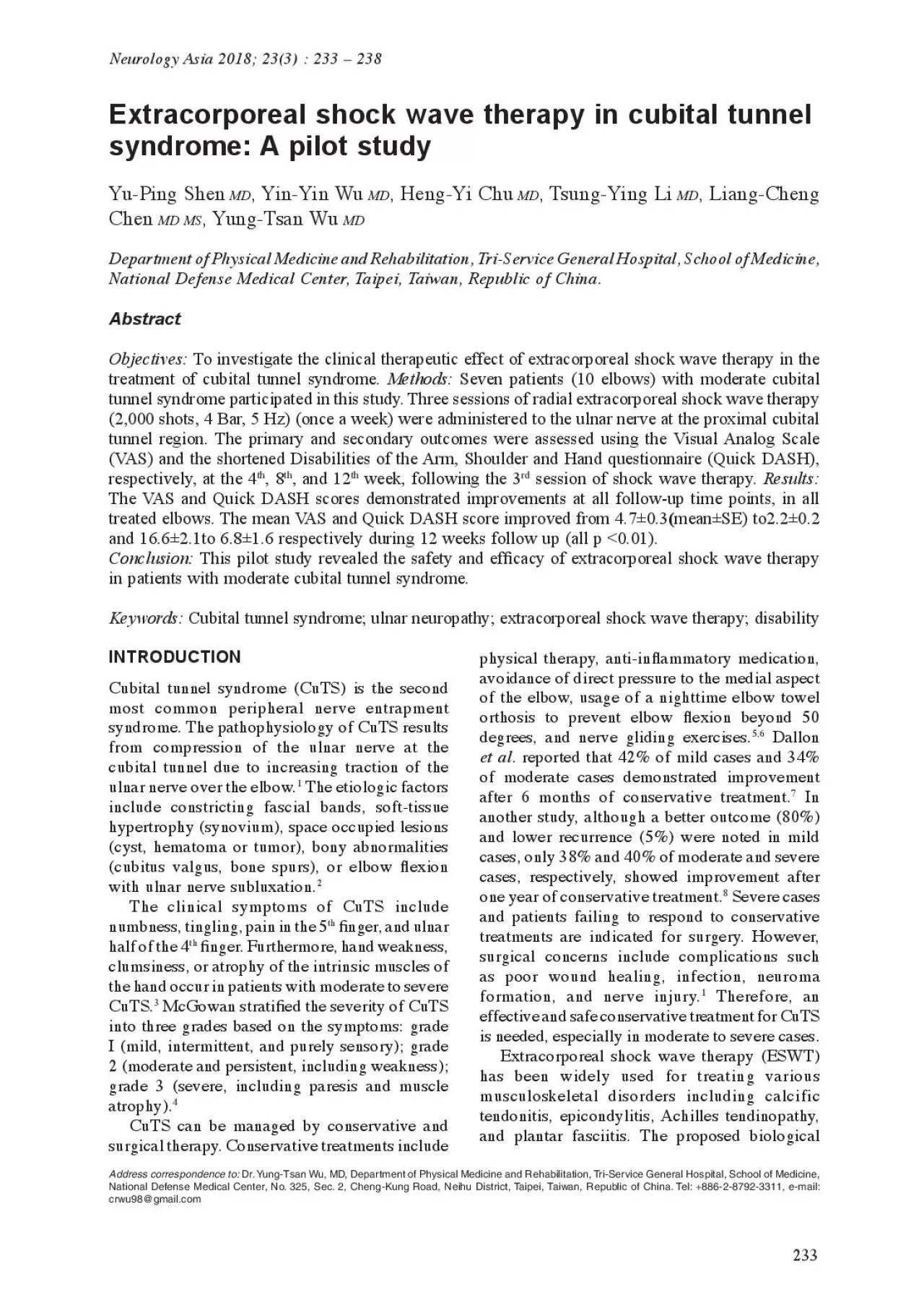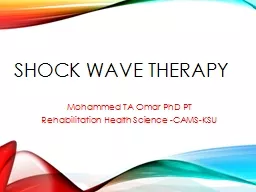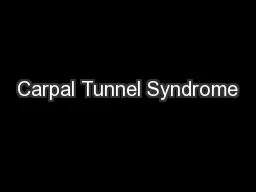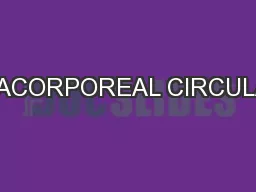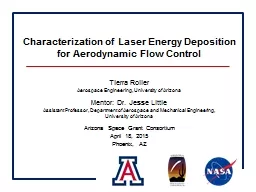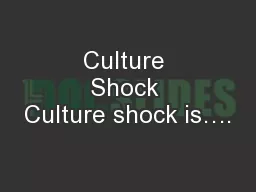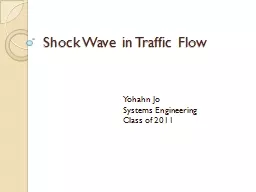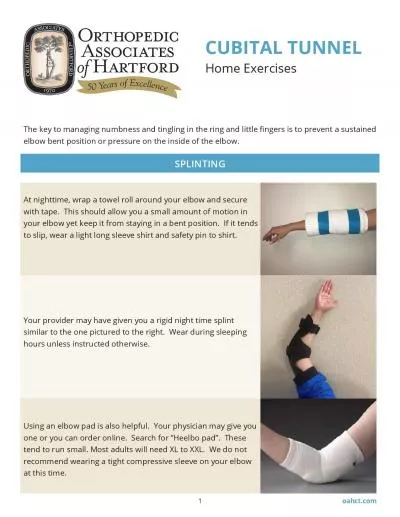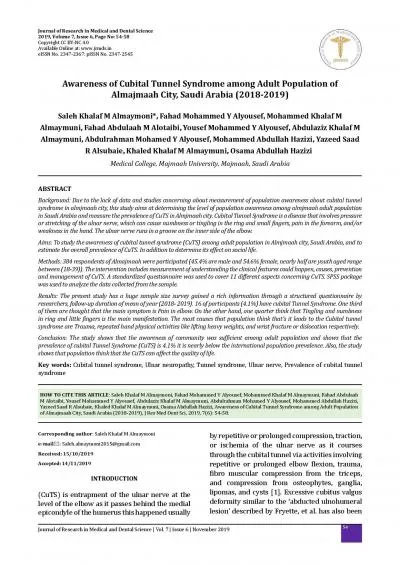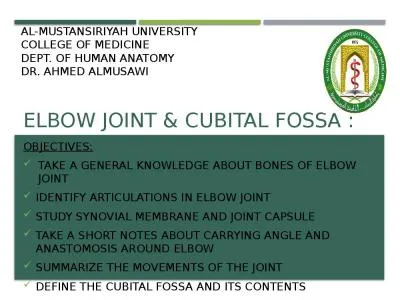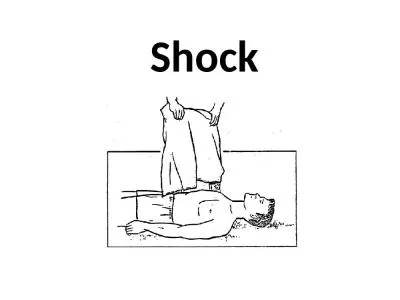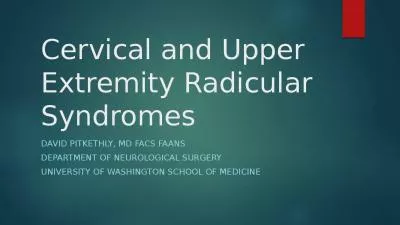PDF-Extracorporeal shock wave therapy in cubital tunnel
Author : hadly | Published Date : 2022-08-26
233 syndrome A pilot study YuPing Shen MD YinYin Wu MD HengYi Chu MD TsungYing Li MD LiangCheng Chen MD MS YungTsan Wu MD Department of Physical Medicine and
Presentation Embed Code
Download Presentation
Download Presentation The PPT/PDF document "Extracorporeal shock wave therapy in cub..." is the property of its rightful owner. Permission is granted to download and print the materials on this website for personal, non-commercial use only, and to display it on your personal computer provided you do not modify the materials and that you retain all copyright notices contained in the materials. By downloading content from our website, you accept the terms of this agreement.
Extracorporeal shock wave therapy in cubital tunnel: Transcript
Download Rules Of Document
"Extracorporeal shock wave therapy in cubital tunnel"The content belongs to its owner. You may download and print it for personal use, without modification, and keep all copyright notices. By downloading, you agree to these terms.
Related Documents

